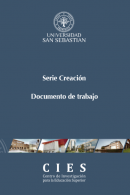
Waist Circumferences of Chilean Students: Comparison of the CDC-2012 Standard and Proposed Percentile Curves
| PROCEDENCIA(S): | Ciencia y Medicina, Ciencias de la Salud, Ciencias para el Cuidado de la Salud. |
|---|---|
| CATEGORÍA(S): | Anatomía y Morfología, Ciencias de la Salud, Ciencias del Deporte y Acondicionamiento Físico, Endocrinología y Metabolismo, Epidemiología, Nutrición y Dietética, Políticas de Salud y Servicios. |
| AUTOR(ES): | Rossana Gómez-Campos / Cinthya Lee Andruske / Jefferson Hespanhol / Jose Sulla Torres / Miguel Arruda / Cristian Luarte-Rocha / Marco Antonio Cossio-Bolaños. |
| TIPO DE MATERIAL: | Artículos. |
| ARCHIVO: |
 Reconocimiento CC BY. Esta obra está bajo una Licencia Creative Commons Reconocimiento CC BY 4.0 Internacional.
Reconocimiento CC BY. Esta obra está bajo una Licencia Creative Commons Reconocimiento CC BY 4.0 Internacional.
The measurement of waist circumference (WC) is considered to be an important means to control overweight and obesity in children and adolescents. The objectives of the study were to (a) compare the WC measurements of Chilean students with the international CDC-2012 standard and other international standards, and (b) propose a specific measurement value for the WC of Chilean students based on age and sex. A total of 3892 students (6 to 18 years old) were assessed. Weight, height, body mass index (BMI), and WC were measured. WC was compared with the CDC-2012 international standard. Percentiles were constructed based on the LMS method. Chilean males had a greater WC during infancy. Subsequently, in late adolescence, males showed values lower than those of the international standards. Chilean females demonstrated values similar to the standards until the age of 12. Subsequently, females showed lower values. The 85th and 95th percentiles were adopted as cutoff points for evaluating overweight and obesity based on age and sex. The WC of Chilean students differs from the CDC-2012 curves. The regional norms proposed are a means to identify children and adolescents with a high risk of suffering from overweight and obesity disorders.


